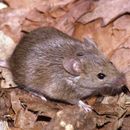en
names in breadcrumbs


The genus Mus or typical mice refers to a specific genus of muroid rodents, all typically called mice (the adjective "muroid" comes from the word "Muroidea", which is a large superfamily of rodents, including mice, rats, voles, hamsters, gerbils, and many other relatives), though the term can be used for other rodents. They are the only members of the tribe Murini.[3] However, the term mouse can also be applied to species outside of this genus.

The following is a list of Mus subgenera, species, and subspecies:[4]
Mice are part of human experimentation. Many of the tests are related to new products that are launched on the market, but they are also required to try new medicines for the cure of chronic and deadly human diseases.
After the outbreak of H5N1 influenza in China in 2006, US scientists discovered that under training, mice could detect carrier birds with this virus, so they would prevent a massive contagion or threat of an epidemic.[7]
{{cite journal}}: CS1 maint: uses authors parameter (link) The genus Mus or typical mice refers to a specific genus of muroid rodents, all typically called mice (the adjective "muroid" comes from the word "Muroidea", which is a large superfamily of rodents, including mice, rats, voles, hamsters, gerbils, and many other relatives), though the term can be used for other rodents. They are the only members of the tribe Murini. However, the term mouse can also be applied to species outside of this genus.